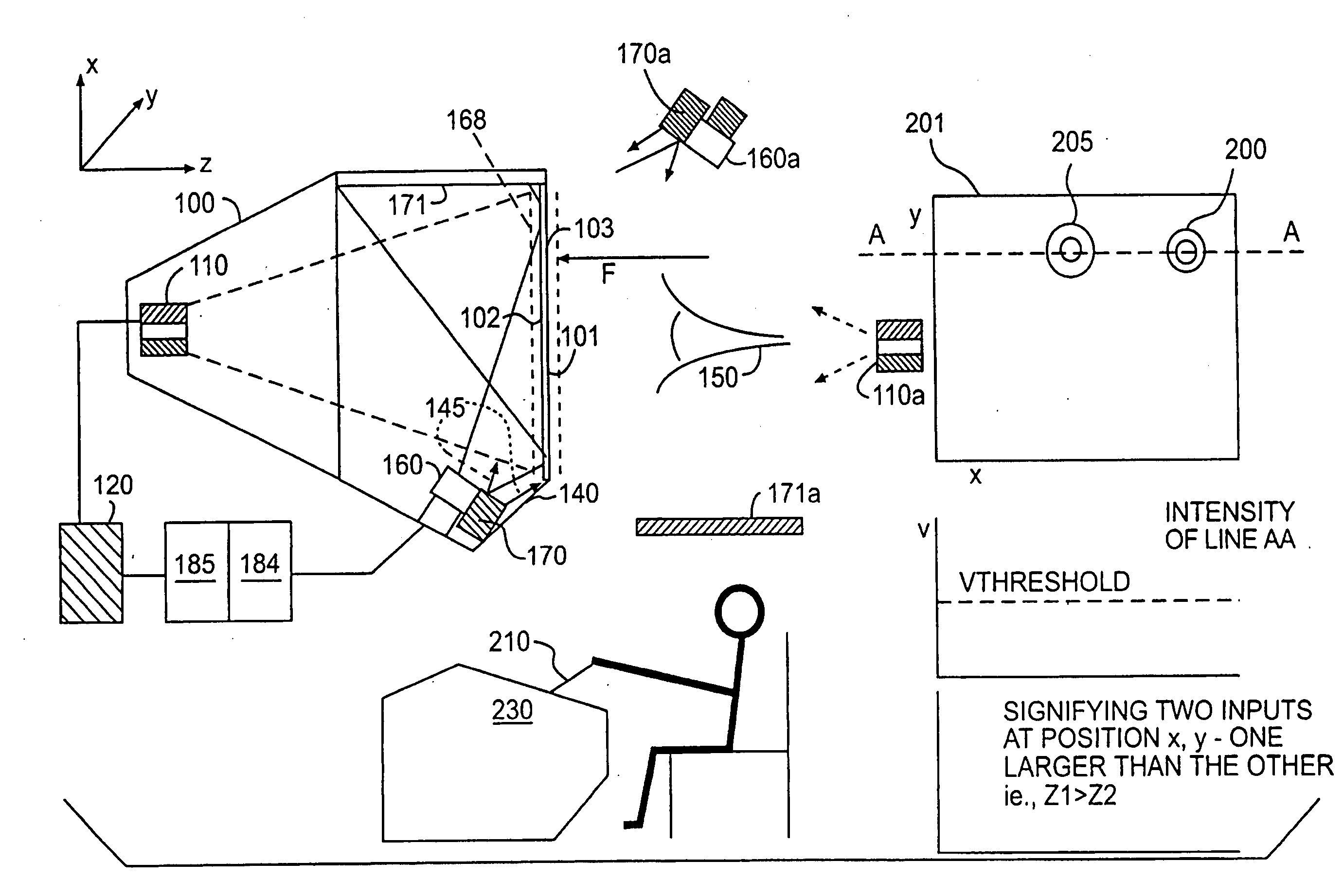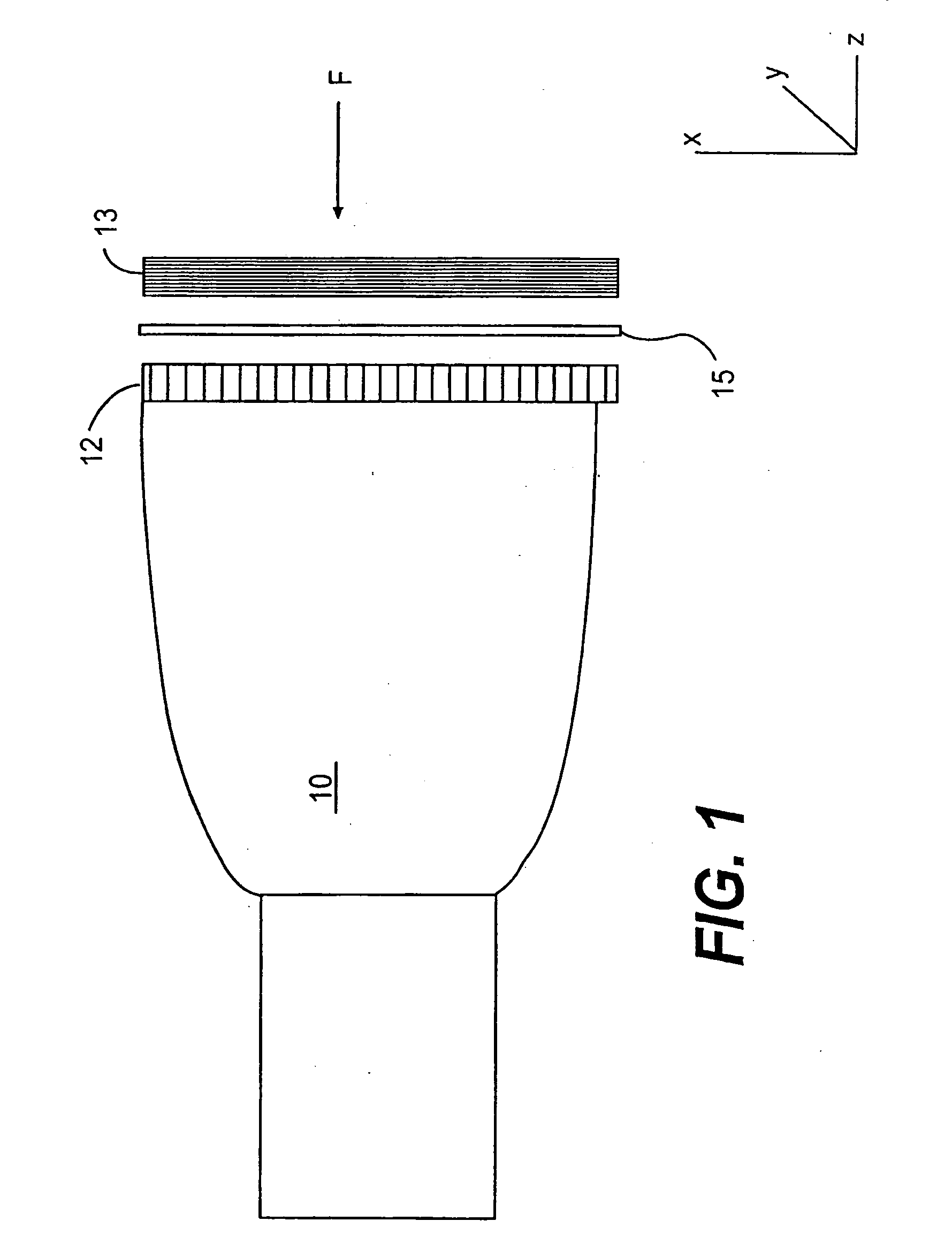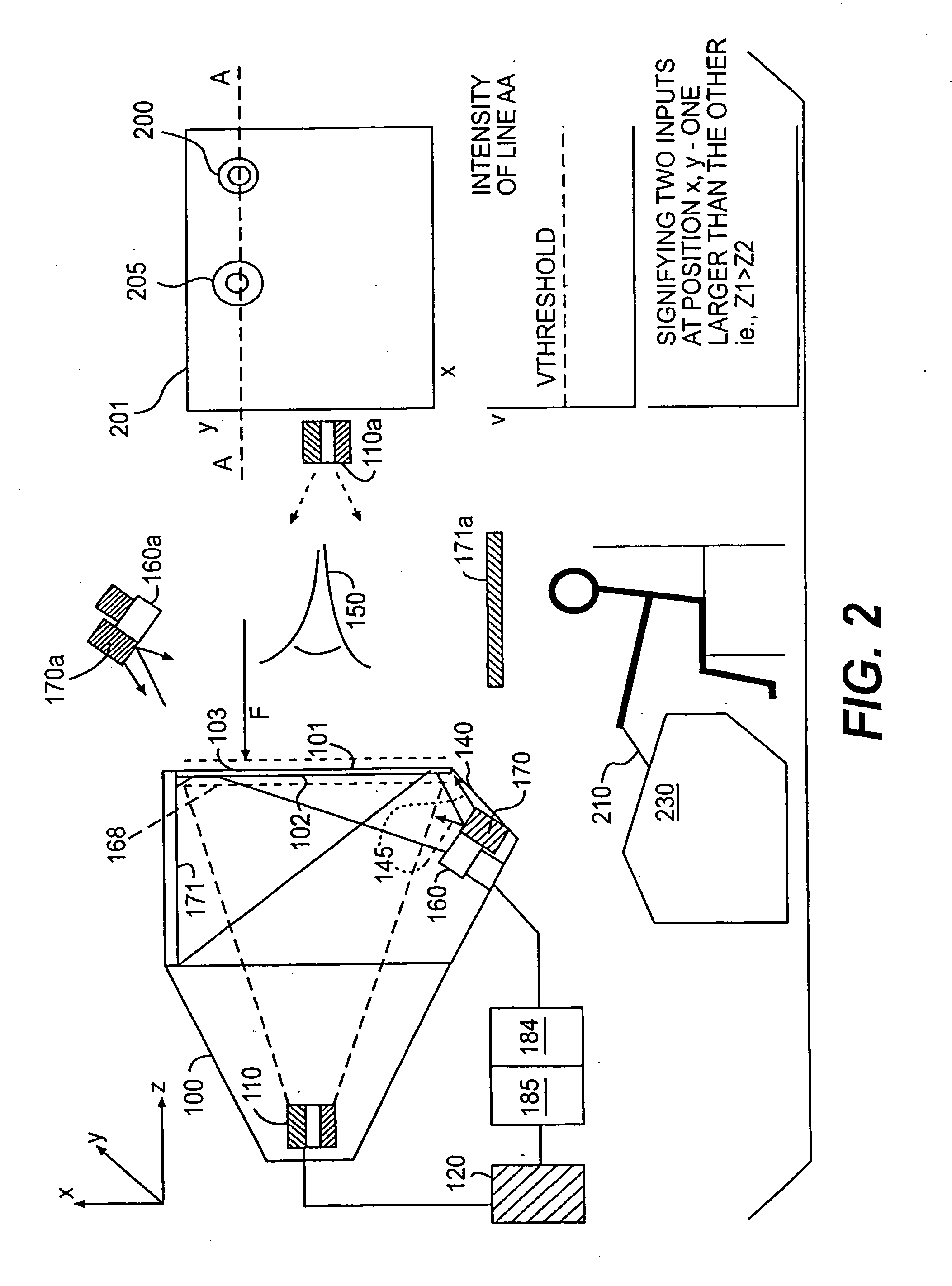Multipoint, virtual control, and force based touch screen applications
a touch screen and virtual control technology, applied in the field of multipoint, virtual control, and force based touch screen applications, can solve the problems of limiting the resolution or the size or both of the display to which entry is made, no known commercial device can do, and limited technology set for this purpose, etc., to achieve cost-effective, unique dynamic detection ability, and cost-competitive
- Summary
- Abstract
- Description
- Claims
- Application Information
AI Technical Summary
Benefits of technology
Problems solved by technology
Method used
Image
Examples
Embodiment Construction
[0082]FIG. 1
[0083]A typical prior art touch screen arrangement which, like the invention, operates in a physical touching mode, is shown in FIG. 1. In this arrangement, a transparent member 12 comprised of a periodic set of conductive bars is placed on the front of CRT tube 10. It is opposed by a second member 13, whose surface includes a set of conducting bars in the orthogonal direction. The two conducting surfaces are separated by a third transparent insulating medium 15, having on array of holes in it which can allow the force of touching to push the front surface through to the rear surface thereby making contact. By scanning the conductors electronically, at the point of contact, a signal is generated which then gives the XY location on the screen of the touch.
[0084]The resolution of the conventional touch screen technology represented by FIG. 1 is limited in that the horizontal / vertical lines must be wide enough spaced so that one can push through without touching adjacent on...
PUM
 Login to View More
Login to View More Abstract
Description
Claims
Application Information
 Login to View More
Login to View More - R&D
- Intellectual Property
- Life Sciences
- Materials
- Tech Scout
- Unparalleled Data Quality
- Higher Quality Content
- 60% Fewer Hallucinations
Browse by: Latest US Patents, China's latest patents, Technical Efficacy Thesaurus, Application Domain, Technology Topic, Popular Technical Reports.
© 2025 PatSnap. All rights reserved.Legal|Privacy policy|Modern Slavery Act Transparency Statement|Sitemap|About US| Contact US: help@patsnap.com



